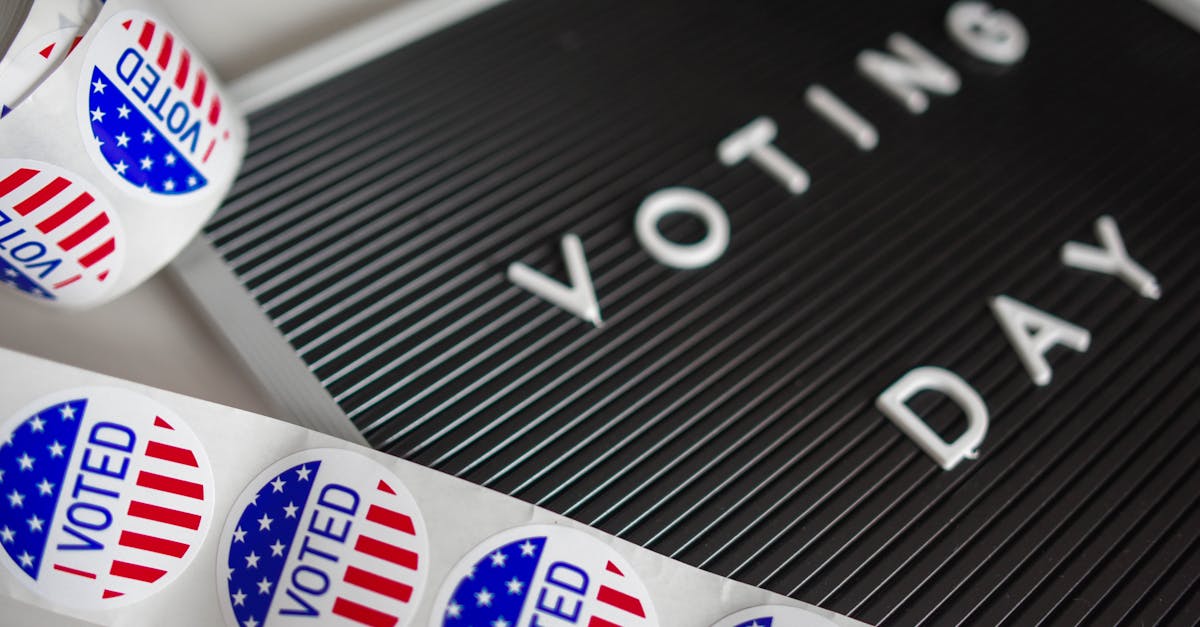
Introduction
With the 2024 U.S. presidential election just around the corner, national attention is increasingly drawn towards the campaigns unfolding across the country. This election cycle promises to be particularly dynamic, with both new entrants and seasoned political figures vying for the highest office in the land. The previous elections have set high stakes, with voters keenly aware of their power to shape the nation's future. Various factors, including economic recovery, social justice, and foreign policy, are hot topics for debate amongst the candidates. American citizens are eager to see how these campaigns will address the pressing issues they care about. The electoral stage is set for another battle of ideas and leadership.
Republican Campaign Strategies
The Republican contenders aim to rally both traditional and new conservative voters by emphasizing themes of economic growth, individual freedoms, and national security. Key figures within the party have been vocal in their criticism of current economic policies, proposing tax reductions and business-friendly regulations as solutions. The GOP (Grand Old Party) is focusing on strengthening its appeal to rural and suburban voters who were pivotal in previous elections. Immigration and border security remain critical issues, with GOP candidates advocating for stricter measures. In terms of foreign policy, they stress the importance of strong diplomatic ties while maintaining a firm stance against global threats. This multi-faceted strategy aims to unite various conservative factions under a common goal.
Democratic Campaign Approaches
Democratic candidates are centering their messages around inclusivity, healthcare reform, and environmental policy, seeking to address the concerns of an increasingly diverse voter base. The party aims to build upon recent legislative achievements, emphasizing the expansion of healthcare access and climate resilience initiatives. Issues like student loan forgiveness and affordable housing are also at the forefront, resonating deeply with younger voters. In urban centers, Democrats are accentuating the importance of social justice reforms and comprehensive policing strategies. Their platform also explores the necessary shift to renewable energy sources, tackling climate change as a national security issue. By framing their policies around community and opportunity, Democrats hope to galvanize broad support in 2024.
The Influence of Third-Party Movements
While the two dominant parties capture most headlines, third-party movements are working diligently to amplify their voices. These parties include Libertarians, Greens, and others focusing on niche issues often overlooked by the major parties. The Libertarian campaign emphasizes individual liberties, minimal government interference, and fiscal responsibility. Meanwhile, the Green Party continues to champion ecological sustainability, more urgent in today's climate discourse. These groups seek to draw dissatisfied or independent voters looking for alternatives to the binary political landscape. Although historically gaining limited traction in presidential elections, third-party candidates are crucial in highlighting diverse perspectives and widening democratic debate.
Impact of Social Media and Digital Platforms
In the digital age, social media has revolutionized how campaigns interact with the electorate. Candidates use platforms like Twitter, Facebook, and TikTok to share messages directly, engage with audiences, and counter misinformation swiftly. The role of data analytics and targeted online advertisements has grown substantially, allowing campaigns to hone in on specific voter demographics with tailored messages. While this digital outreach enhances candidate visibility, it also raises concerns over echo chambers and the perpetuation of polarization. Ensuring transparency and ethical handling of data remains a critical challenge for campaigns leveraging these technologies. Analyzing past campaign successes, teams are continuously adapting to refine their digital strategy for securing votes.
Key Issues Dominating the Campaigns
As candidates crisscross the nation, myriad issues take center stage in town halls, debates, and speeches. Economic recovery following the global pandemic remains a top priority, with job creation and inflation control drawing heightened focus. Healthcare reforms, dealing with both the cost and accessibility of services, play a pivotal role in campaign narratives. Candidates are also addressing the cultural and social concerns of constituents, such as racial equality and women's rights. Foreign policy strategies, particularly concerning China and Russia, are scrutinized rigorously in the run-up to the election. These discussions shape the core of campaign platforms, influencing vital decisions for the electorate come voting day.
Polling and Voter Sentiments
Polls serve as an essential barometer of public opinion, guiding campaign adjustments as election day approaches. Early polls indicate a close contest, with many citizens expressing fluid loyalties amidst changing circumstances. However, some voters remain undecided, emphasizing the need for strategic campaign efforts to win them over. Notably, voter turnout is anticipated to be high, driven by the heightened stakes and pivotal issues at hand. Education around voter rights and processes becomes crucial to maximize democratic engagement and thwart voter suppression. In this politically charged atmosphere, the sentiments reflected in polls highlight diversified priorities within the electorate.
Voter Engagement and Grassroots Movements
Grassroots organizations play a key role in mobilizing voters and clarifying candidates' positions on pressing issues. These movements often shine a light on overlooked policy areas and champion community-driven solutions. Community outreach initiatives aim to bolster voting education and convey the power of individual voices. By employing ground troops, phone banking, and digital communication strategies, such organizations strengthen the bond between candidates and constituents. Their efforts also contribute to expanding the political action landscape, often prompting candidates to adopt more people-centered policies. As grassroots influence grows, they foster a sense of representation among ordinary citizens, motivating them to participate actively in the democratic process.
Debates and Public Discourse
Televised debates and public forums serve as significant opportunities for candidates to present their platforms and distinguish themselves. These exchanges allow voters to assess each candidate's strengths, policy knowledge, and leadership capabilities. In 2024, debates will be crucial in defining how candidates handle policy disagreements and articulate their visions for the nation's future. Expect heated discussions around foreign relations, economic plans, and societal values. Impromptu town hall meetings and media appearances supplement these formal debates, providing further arenas for candidates to field questions directly from the public. As campaigns gain momentum, these platforms remain essential in shaping voter perceptions and electoral outcomes.
Conclusion
As the 2024 election approaches, the intensity of campaign activities continues to mount. Candidates from all corners of the political spectrum are meticulously crafting their narratives to resonate with a diverse electorate. The interplay of traditional campaigning and modern digital strategies exemplifies the evolving nature of electioneering. Third-party voices, grassroots initiatives, and public debates help enrich the electoral dialogue, offering fresh perspectives for consideration. Ultimately, voter participation and informed decision-making are at the heart of this pivotal democratic exercise. The engagement of citizens across the nation ensures that democracy remains a participatory force, shaping the future of American governance.